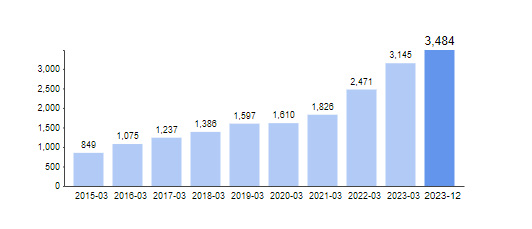1. Understanding the purpose of backtesting
Tips: Be aware of the benefits of backtesting to enhance your decision-making process by analysing the performance of an existing strategy using the historical data.
This is because it ensures that your plan is viable prior to placing your money at risk in live markets.
2. Utilize high-quality, historical data
Tips. Make sure that your previous data for price, volume or other metrics are correct and complete.
Include information on corporate actions, splits and delistings.
Use market-related data such as forks and halves.
The reason: Good data results in realistic results
3. Simulate Realistic Trading Situations
Tip – When performing backtests, ensure you include slippages, transaction costs and bid/ask spreads.
Why: Ignoring these elements can lead to over-optimistic performance results.
4. Make sure your product is tested in a variety of market conditions
TIP Practice your strategy by experimenting by experimenting with different market scenarios, including bull, sideways, and bear trends.
Why: Strategies are often distinct under different circumstances.
5. Focus on key Metrics
Tip: Analyze metrics in the following manner:
Win Rate ( percent) Percentage profit earned from trades.
Maximum Drawdown: Largest portfolio loss during backtesting.
Sharpe Ratio: Risk-adjusted return.
Why: These metrics can assist you in determining the strategy’s potential risk and return.
6. Avoid Overfitting
Tips: Make sure your strategy doesn’t get overly optimized to fit historical data by:
Testing of data not used in the optimization (data that were not used in the sample).
Instead of complicated models, consider using simple, solid rule sets.
Why: Overfitting results in poor real-world performance.
7. Include transaction latencies
Simulation of time delays between the generation of signals and execution.
For copyright: Be aware of the exchange latency and network latency.
Why is this: The lag time between the entry and exit points is a concern, particularly in markets that move quickly.
8. Test your Walk-Forward ability
Divide historical data in multiple periods
Training Period: Optimize strategy.
Testing Period: Evaluate performance.
What is the reason? The strategy allows for the adaptation of the strategy to different times of the day.
9. Combine forward testing and backtesting
Tips: Try techniques that have been tested in the past for a demonstration or simulated live environment.
The reason: This can help confirm that the strategy works as expected under the current market conditions.
10. Document and Iterate
Tips – Make detailed notes on backtesting assumptions.
Why: Documentation is an excellent method to enhance strategies over time, and identify patterns that work.
Bonus: Get the Most Value from Backtesting Software
Backtesting is a process that can be automated and durable with platforms such as QuantConnect, Backtrader and MetaTrader.
Why: Advanced tools streamline processes and minimize human errors.
These tips will assist in ensuring that your AI strategies are thoroughly tested and optimized both for penny stock and copyright markets. Read the top rated over here about best ai for stock trading for website examples including ai copyright trading, ai for copyright trading, best ai copyright, stock ai, ai sports betting, investment ai, ai sports betting, best copyright prediction site, ai trader, best stock analysis website and more.

Top 10 Suggestions For Regularly Making Improvements And Updates To Models For Ai Stocks And Stock Pickers
Regularly updating and optimizing AI models for stock selection, predictions, and investments is vital to ensure accuracy, adjusting to changes in the market and enhancing overall performance. Markets as well as AI models both evolve as time passes. Here are 10 suggestions for improving and updating your AI models.
1. Continuously incorporate new market information
TIP: Make sure to regularly incorporate the latest market information, such as earnings reports, stock prices macroeconomic indicators, social sentiment to ensure that your AI model is up to date and is able to reflect current market conditions.
AI models get outdated without new data. Regular updates increase your model’s accuracy, predictability and responsiveness by keeping it up to date with current trends.
2. Monitor Model Performance In Real-Time
Tip: Set-up real-time monitoring to monitor how well your AI model is performing under real-time market conditions, and look for indicators of drift or underperformance.
Why: Monitoring your performance allows you to identify issues, such as the model’s performance deteriorating (when the accuracy of a model decreases in time) which gives you the chance to intervene and adjustments prior to major loss.
3. Train your models frequently by using the most recent data
Tip Retrain your AI models on a regular schedule (e.g. monthly, quarterly, or monthly) by using the most recent historical data to refine the model and adapt it to changing market dynamics.
What’s the reason: Market conditions change over time and models that are based on outdated data may lose their accuracy. Retraining allows models to adapt to the latest market trends and behavior. This helps ensure that they remain relevant.
4. The tuning of hyperparameters can increase accuracy.
Tips: Ensure that you regularly optimize the parameters (e.g., learning rate, number of layers, etc.) of your AI models through random search, grid search, or other optimization methods.
The reason: Proper tuning of hyperparameters is essential to ensure that your AI models perform in the best way possible. This improves the accuracy of predictions, as well as help to prevent overfitting (or underfitting) to historical data.
5. Experiment with Innovative Features and Variables
TIP: Always try different features and data sources to improve the model and uncover new relationships.
What’s the reason? Adding relevant new features can help improve the accuracy of models because it allows the model access information.
6. Make use of ensemble methods to improve predictions
Tips: Make use of techniques for ensemble learning, such as stacking or bagging to combine AI models. This will improve the accuracy of your prediction.
Why Ensemble models boost the accuracy of your AI models. Through leveraging the strengths and weaknesses of different models, they reduce the possibility of making false predictions due to weaknesses of a single model.
7. Implement Continuous Feedback Loops
TIP: Create an feedback loop in which model forecasts and the actual market results are examined and used to improve the model on a regular basis.
What is the reason? Feedback loops helps the model learn from real-world performances by identifying any flaws or biases which need to be rectified and refining its future predictions.
8. Include regular Stress Testing and Scenario Analysis
Tips: Test your AI models with scenarios of market conditions, like extreme volatility, crashes or unpredictable economic events to test their robustness and ability to handle unexpected situations.
Stress tests verify that AI models can adjust to market conditions that are not typical. It can help identify any weaknesses which could cause the AI model to fail in highly volatile or extreme market situations.
9. AI and Machine Learning: What’s New?
Be informed of the most recent AI developments in AI. Also, experiment with the addition of new techniques to your models, like transformers and reinforcement-learning.
What is the reason? AI (artificial intelligence) is a rapidly evolving field. With the help of the most recent advancements that you can boost your model’s performance, efficiency and accuracy.
10. Continuously Evaluate and Adjust to improve Risk Management
Tips: Evaluate and refine the risk management elements of your AI model regularly (e.g. stopping-loss strategies and position sizing, risk-adjusted returns).
The reason: Risk management is important in stock trading. Regular evaluations ensure that your AI model is not just optimized for returns but also manages risk efficiently in varying market conditions.
Track Market Sentiment to Update Models.
TIP: Integrate sentiment analysis (from news, social media, etc.) into your model updates to allow it to adjust to changes in investor behavior and market sentiment.
The reason is that stock prices are influenced by market sentiment. The integration of sentiment analysis into your model lets you detect broader emotional and financial mood shifts which might not have been able to be analyzed by traditional data.
Take a look at the following information for more details.
Through regular updating and optimizing your AI stock picker, forecasts, and investment strategies, you will ensure that your model is always able to adapt accurate, reliable and competitive in a ever-changing market. AI models which are continuously retrained, refined and enhanced with fresh data while integrating real-world feedback and the most current AI developments can give you an edge in stock forecasting and decision-making. Follow the top rated best stock analysis app recommendations for more recommendations including stock analysis app, trading bots for stocks, free ai tool for stock market india, investment ai, incite, trading bots for stocks, best ai stocks, stock trading ai, ai copyright trading bot, ai investing app and more.
